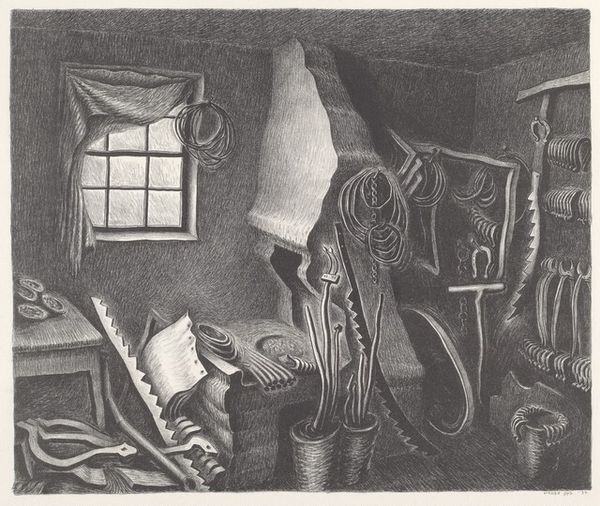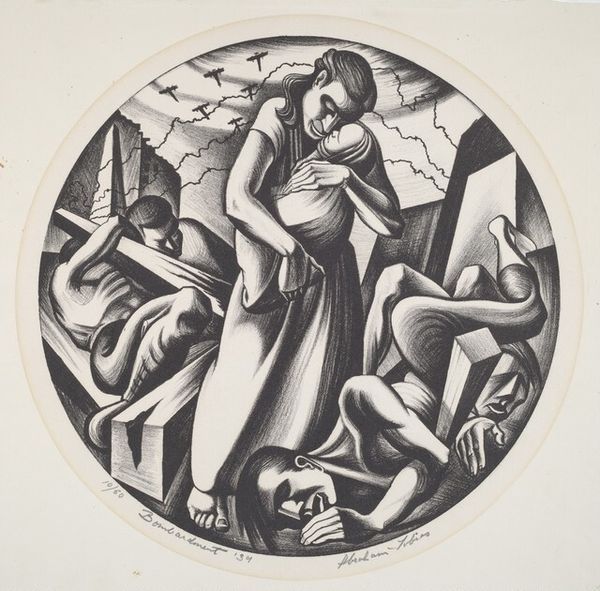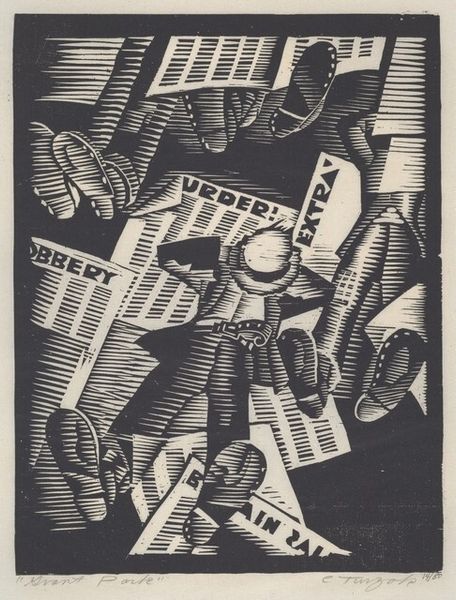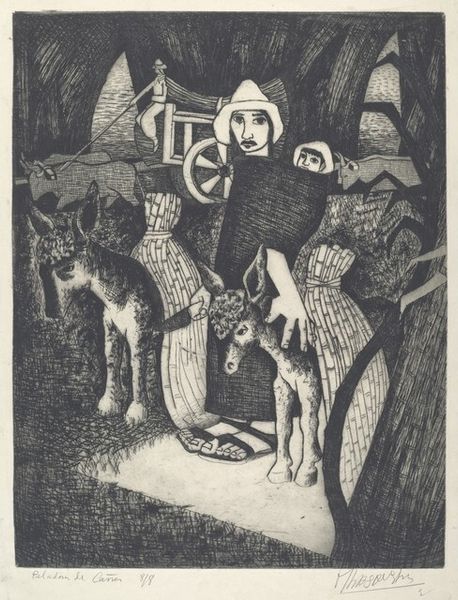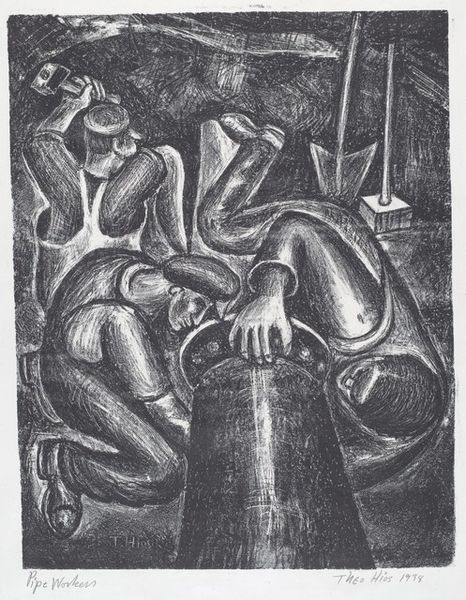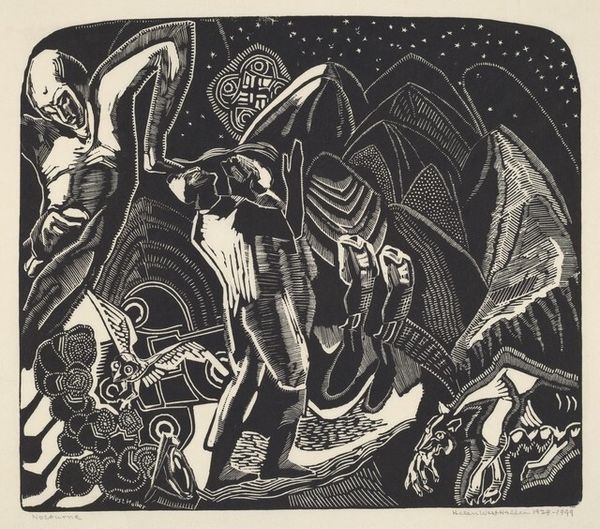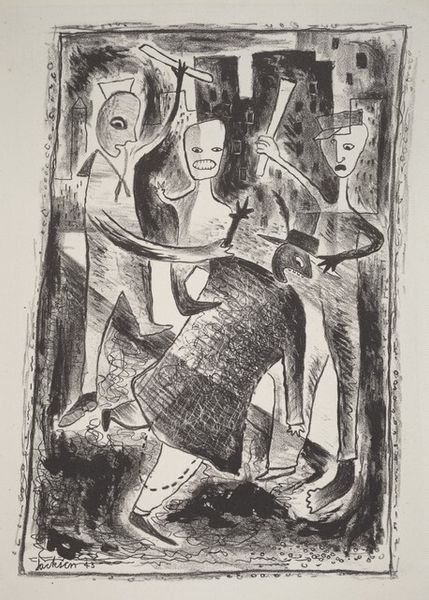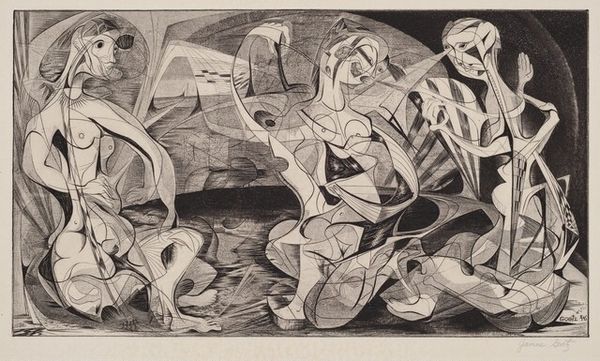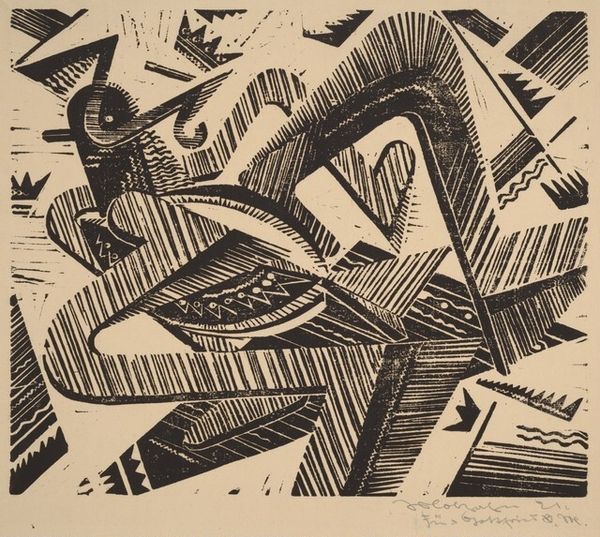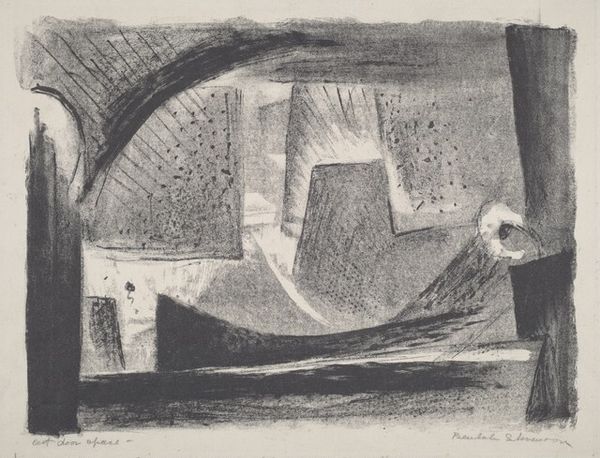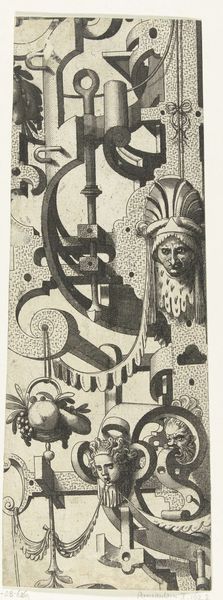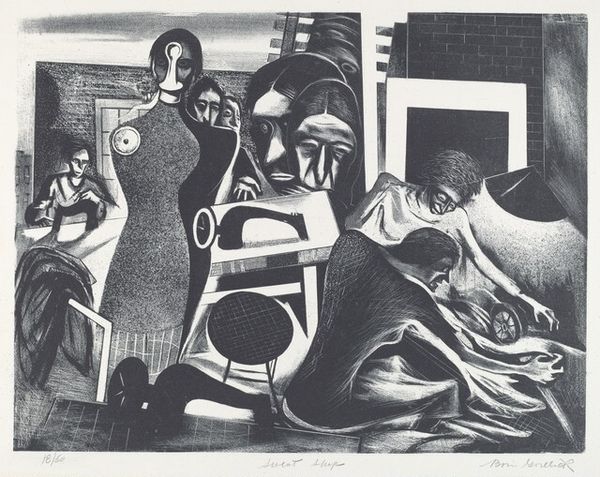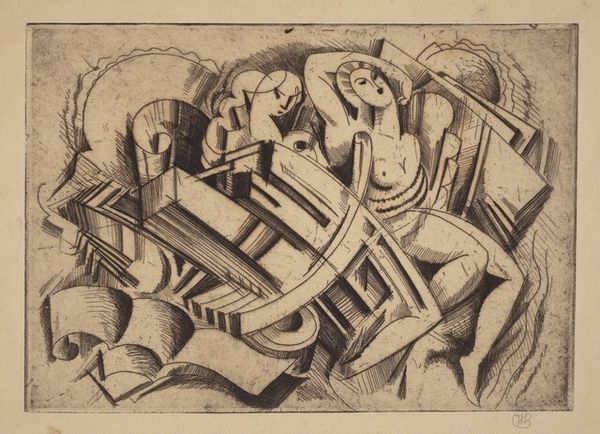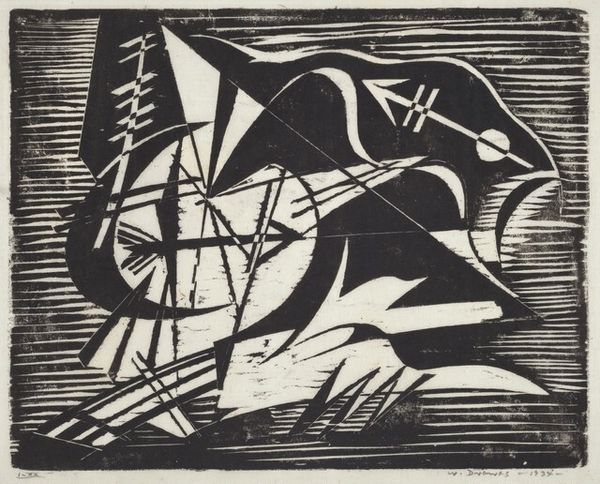
Dimensions: image: 270 x 352 mm sheet: 320 x 440 mm
Copyright: National Gallery of Art: CC0 1.0
Curator: Irving Amen's stark 1940 print, "Men Against Machines," depicts a struggle between human figures and geometric, almost monstrous, mechanical forms. The piece employs strong contrasts in black and white, executed in charcoal. Editor: My immediate reaction is unease. There's a raw, almost primal quality to it. The harsh lines and stark contrast amplify the sense of conflict. The stylized tanks with the large eyes make them look like malevolent beings rather than just inanimate objects. Curator: Absolutely. Amen created this during a period of intense anxiety about industrialization and mechanization, especially in light of the looming Second World War. This piece engages with the common fear that technological advancement would dehumanize society and subjugate the individual. Editor: The visual vocabulary of "Men Against Machines" is incredibly powerful. Eyes appear again and again, giving the tanks not just sight, but a judgmental awareness. In Jungian terms, we could see these mechanical eyes as representing the shadow self—that repressed fear of losing humanity to progress. Curator: And note how the artist portrays the figures as fragile and dwarfed by the machines. Their gestures of defiance seem almost futile. Consider this image within the framework of early 20th-century socialist thought, where such conflicts were often depicted as class struggle enacted through industrial means. The oppressed fighting back. Editor: There's a timelessness, though, that transcends any one ideology. The print encapsulates a more universal anxiety. What are those sharp peaks in the background? They might be factory roofs or perhaps jagged mountains. It's an oppressive landscape overall. Curator: The geometric forms aren't strictly industrial, and I think you're right that lends it this timeless, even mythological dimension, it echoes similar concerns of other art movements reacting to Modernity across time. Editor: In many ways, "Men Against Machines" reminds us that our symbolic language is often a blend of new anxieties expressed through archetypal forms. The struggle between humanity and its creations is hardly new, but Amen gives it a uniquely 20th-century visual language. Curator: A haunting reminder of an anxiety still resonant today. Editor: Indeed. Art always holds up a mirror, and sometimes what we see isn't entirely comforting.
Comments
No comments
Be the first to comment and join the conversation on the ultimate creative platform.
